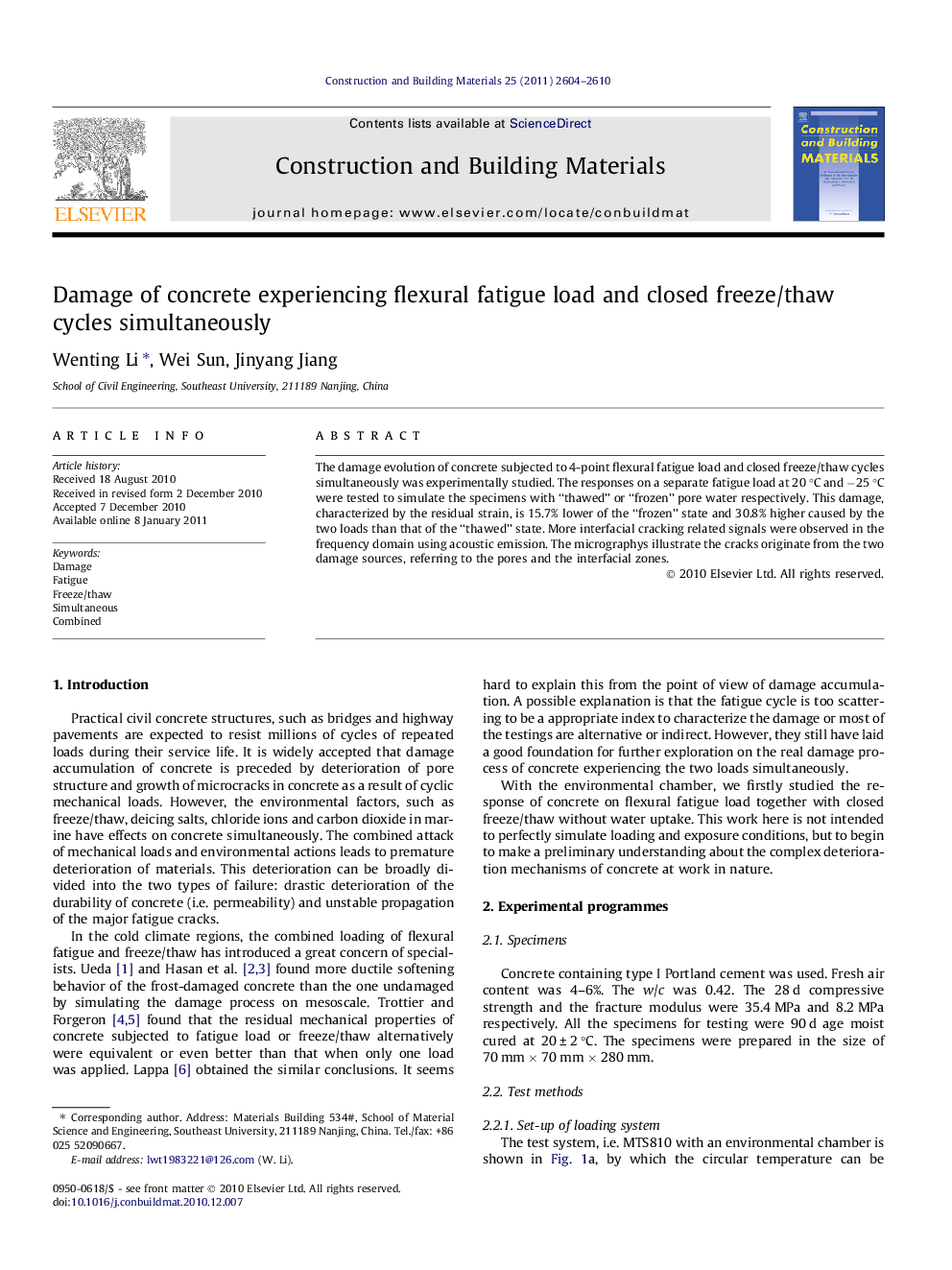| Article ID | Journal | Published Year | Pages | File Type |
|---|---|---|---|---|
| 259301 | Construction and Building Materials | 2011 | 7 Pages |
The damage evolution of concrete subjected to 4-point flexural fatigue load and closed freeze/thaw cycles simultaneously was experimentally studied. The responses on a separate fatigue load at 20 °C and −25 °C were tested to simulate the specimens with “thawed” or “frozen” pore water respectively. This damage, characterized by the residual strain, is 15.7% lower of the “frozen” state and 30.8% higher caused by the two loads than that of the “thawed” state. More interfacial cracking related signals were observed in the frequency domain using acoustic emission. The micrographys illustrate the cracks originate from the two damage sources, referring to the pores and the interfacial zones.
Research highlights► We find 30.8% higher damage due to fatigue and closed freeze/thaw simultaneously. ► Both of fatigue and closed freeze/thaw contribute to the damage accumulation. ► We conclude the failure mechanisms are related to the dual effect of ice.
